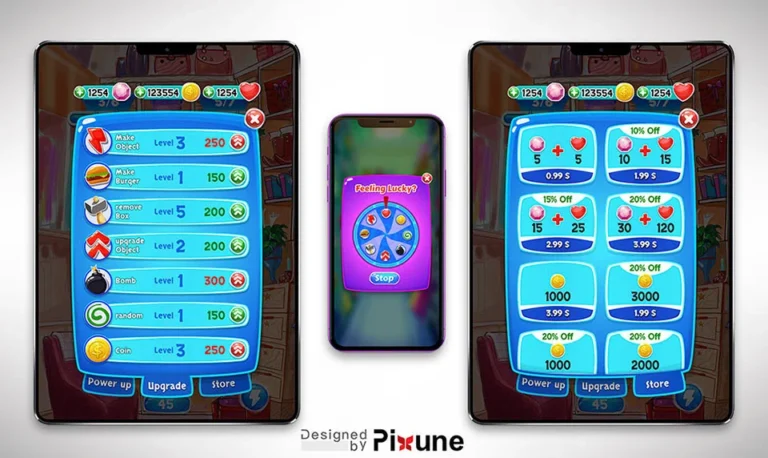VR, which stands for virtual reality, is revolutionizing gaming by immersing players in virtual worlds like never before. With specialized VR hardware like headsets, controllers, and sensors, players can experience games from a first-person perspective and truly interact with digital environments. Let’s break down what exactly VR gaming is, the hardware that makes it possible, popular game genres and gameplay elements tailored for this new tech, platforms that support it, the software powering VR experiences, some notable titles leading innovation, and why this emerging tech is creating such a sense of presence and realism for players.
What Is the VR Definition?
Virtual reality refers to computer-generated 3D environments that players can interact with and feel immersed in. Unlike traditional gaming on screens, VR headsets with lenses display stereoscopic 3D imagery that surrounds the player’s field of view, making them feel like part of the digital world. The addition of spatial audio, motion tracking, and gesture-detecting controllers complements the visuals to complete the life-like experience. Overall, VR gaming, as a new trend in the video game industry, places players directly into the video game, giving the sensation of actually being present in the virtual world.
Demystifying the Magic of VR Gaming
It’s one thing to be amazed by the realism of VR, but understanding how all the technology synchronizes flawlessly helps appreciate the technical wizardry powering seamless virtual environments and interaction.
The VR headsets contain display screens that render 3D imagery of game art by splitting the video feed into two channels – one per eye. Lenses stretch and focus the stereo images to convincingly surround the field of view, which is further enriched by embedded motion sensors tracking the position and tilt of the head in real-time.
This visual data gets passed to the gaming machine – whether a computer, console, or even a mobile phone – to orient and render imagery to precisely match the player’s perspective. The more advanced the display resolution and processing capabilities, the more detailed and responsive the scenes can be.
Meanwhile, handheld controllers connect wirelessly to map button presses and motion gestures to in-game actions. Their accelerometer, gyroscopic, and magnetic sensors track positioning to mirror hand and arm movements in the virtual world.
For example, literally grabbing a cartridge from your backpack, loading your weapon, and aiming by tilting the controller builds tactical suspense. External sensors assist in tracking by extending the active playspace for room-scale experiences.
Altogether high high-definition stereoscopic displays, responsive motion-detecting computers, and specialized peripherals all orchestrate to suspend disbelief to step inside unbelievable yet increasingly convincing virtual worlds straight out of dreams.
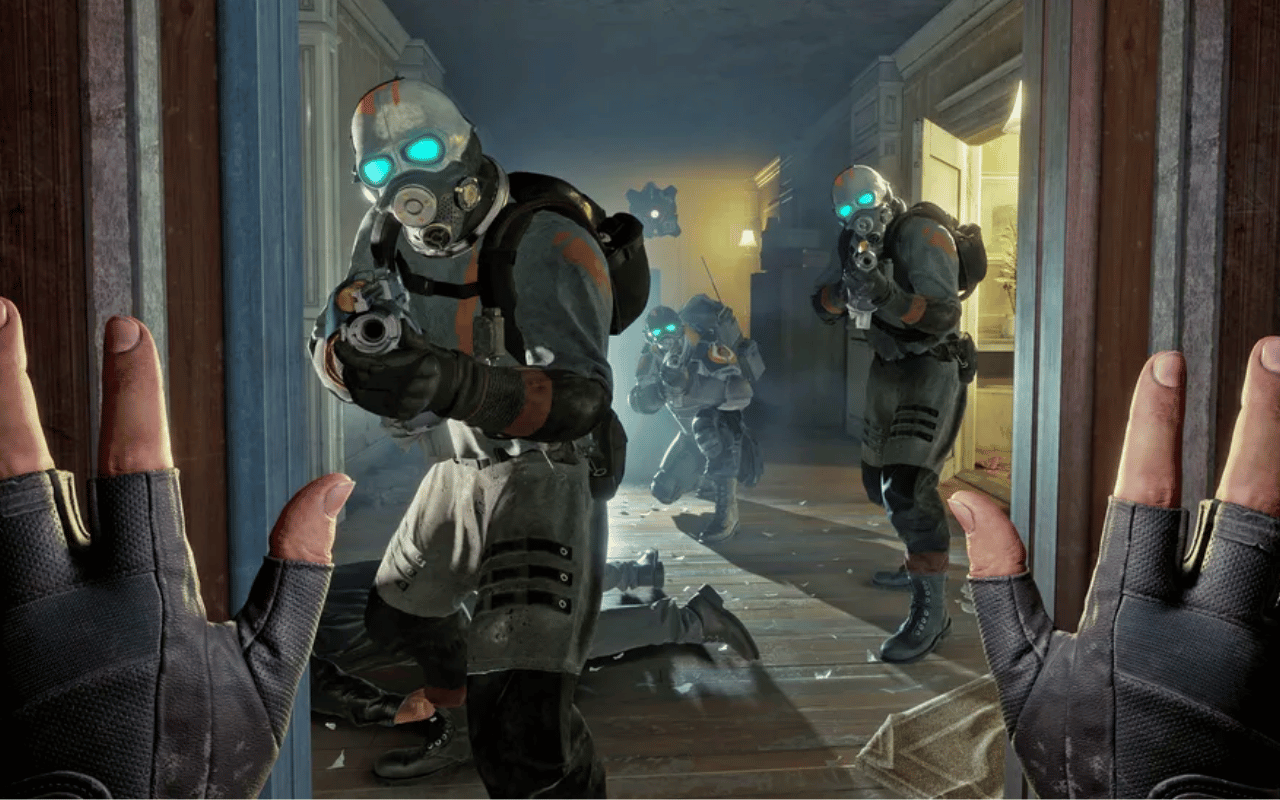
What Are the VR Hardware Technologies?
Several pieces of hardware technology make immersive VR gaming possible. Together, these create the magical VR experience – displays, and audio make players feel transported while tracking technology converts IRL motion into game inputs to enable real-time interaction.
1. Headsets
Worn over the eyes like goggles, VR headsets contain lenses with displays that project 3D environments into the player’s field of view when playing games. Integrated sensors also track head motions to update imagery accordingly.
2. Controllers
Handheld devices with buttons, triggers, joysticks, and sensors allow players to interact with virtual objects by reaching out, pointing, grabbing, firing weapons, etc. Designated VR controllers are optimized for detecting position, motion, and gestures.
3. Sensors
External sensors placed strategically around the room track headset and controller movement, detecting position and motion in 3D space to translate player actions into the virtual world.
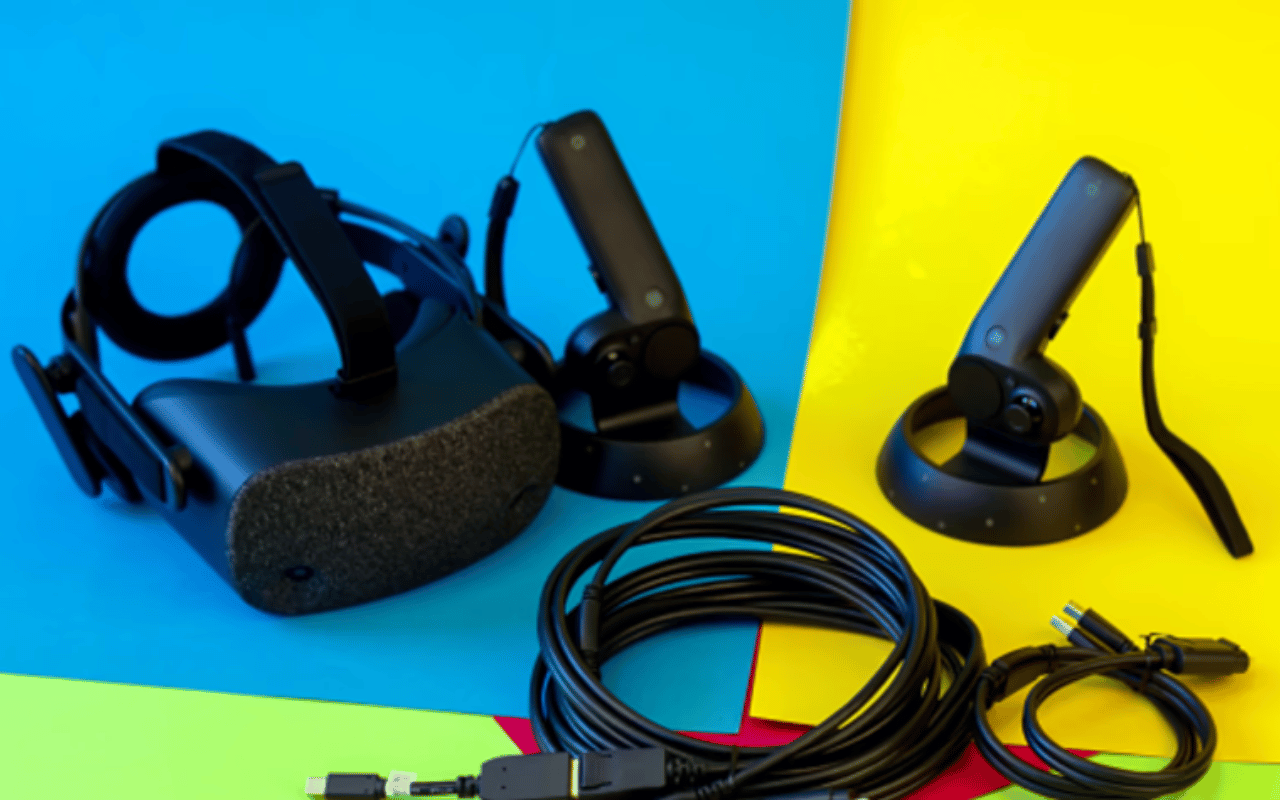
VR Game Genres & Gameplay
VR opens boundless possibilities for unprecedented video game experiences. Some game genres and gameplay concepts that work effectively in virtual reality include:
Action: Fast-paced shooters, sword fighting games, space dogfighting, superhero combat, zombie slaying, etc. Battle enemies and test combat abilities using motion controls.
Adventure: Explore expansive lands, puzzle solve, discover mysteries and hidden items, and practice magic – freed from screen constraints. Look around naturally and use motion controls to interact.
Simulation: Experience activities first-hand, like driving exotic racecars, flying planes, and traveling into space. Manipulate cockpits and vehicles using VR controllers.
Gameplay Elements:
- 360 Environments: Visually survey surrounding scenery in all directions for environmental interaction opportunities.
- Spatial Audio: Sounds occur directionally around the player heightening alertness and environment detection abilities
- Motion controls: Initiative movements with controllers to perform in-game actions from grabbing to casting spells
2 Types of VR Gaming Platforms
At the moment, VR gaming content is available through these primary platforms:
- PC VR: High-end VR headsets connect to gaming desktops/laptops via cables and leverage additional processing power for optimal performance
- Console VR: All-in-one VR units like Meta Quest 2 attach directly to consoles like PS5, providing streamlined accessibility
Each has advantages from better graphics to simplicity, expanding access to more advanced immersive experiences.
What Are the Software Powering VR?
Sophisticated software enables crafting high-caliber productions to take advantage of VR’s capabilities.
Game engines like Unity and Unreal Engine simplify, producing 3D playable experiences with built-in VR support.
3D modeling software like Blender, Maya, and 3ds Max craft next-gen assets while painting programs generate ultra-detailed textures.
Examples of Notable VR Titles
Creative developers are releasing revolutionary VR-exclusive games as well as revamping traditional titles for virtual worlds. Some all-time favorites include:
- Beat Saber: The iconic rhythm game has players slashing blocks with light sabers choreographed to music. It’s a unique test of reflexes and rhythm.
- Half-Life Alyx: This new chapter in the classic shooter series reveals gravity gloves that let players interact naturally with objects in the disturbing alien universe.
- SUPERHOT VR: What started as an experimental browser game evolves into “the most innovative shooter in years” where time stops when you do allowing epic cinematic moments.
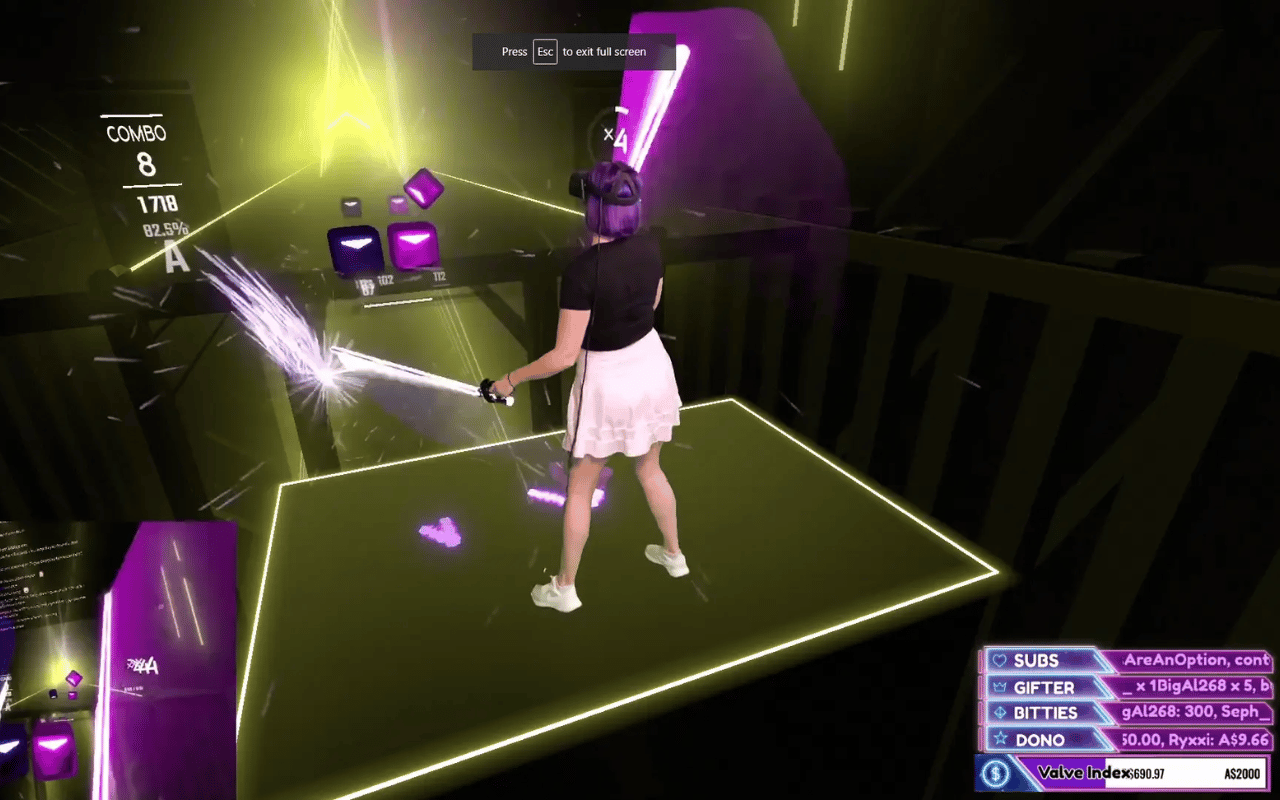
Choosing Your VR Setup
With virtual reality going mainstream, more affordable and capable VR equipment is hitting the market, making it easier than ever before to bring immersive worlds home. But the proliferation of choices means determining what to buy can get confusing. Here are some key considerations when selecting your VR gaming gear:
1. Headset Tech
Key specs to examine are display resolution, refresh rates, and field of view to prioritize more realistic visuals. Also, look at lens spacing adjustments to ensure images are perfectly aligned and clear.
2. Tracking Capabilities
Precise tracking is paramount, so compare options for angular tracking range, number of external sensors required, if any, and how accurately movements translate in-game.
3. Ergonomics
Adjustable straps, weight distribution balances and interchangeable face interfaces allow tailoring the fit and comfort over long play sessions. Assess weight, available mods and intended play duration.
4. Controller Design
Standard inputs like buttons and thumbsticks should be easy to reach without having to make significant hand adjustments. Additionally, check sensor precision and battery specs.
5. Cables & Connections
Whether connecting to a high-powered PC or console, ensure cables are lengthy enough for room-scale movement and display interfaces match required ports, particularly for graphics card hookups.
The Experiential Difference
While screen-based gaming is enjoyed by millions, VR has a profound difference many describe as simply magical.
Presence and Embodiment – Players gain an enhanced sensation of physically existing within the virtual world, further blurring the lines between realities.
Realism – More immersive sensory input, including expansive visuals, spatial audio, and interactive motion abilities, make virtual experiences feel increasingly life-like.
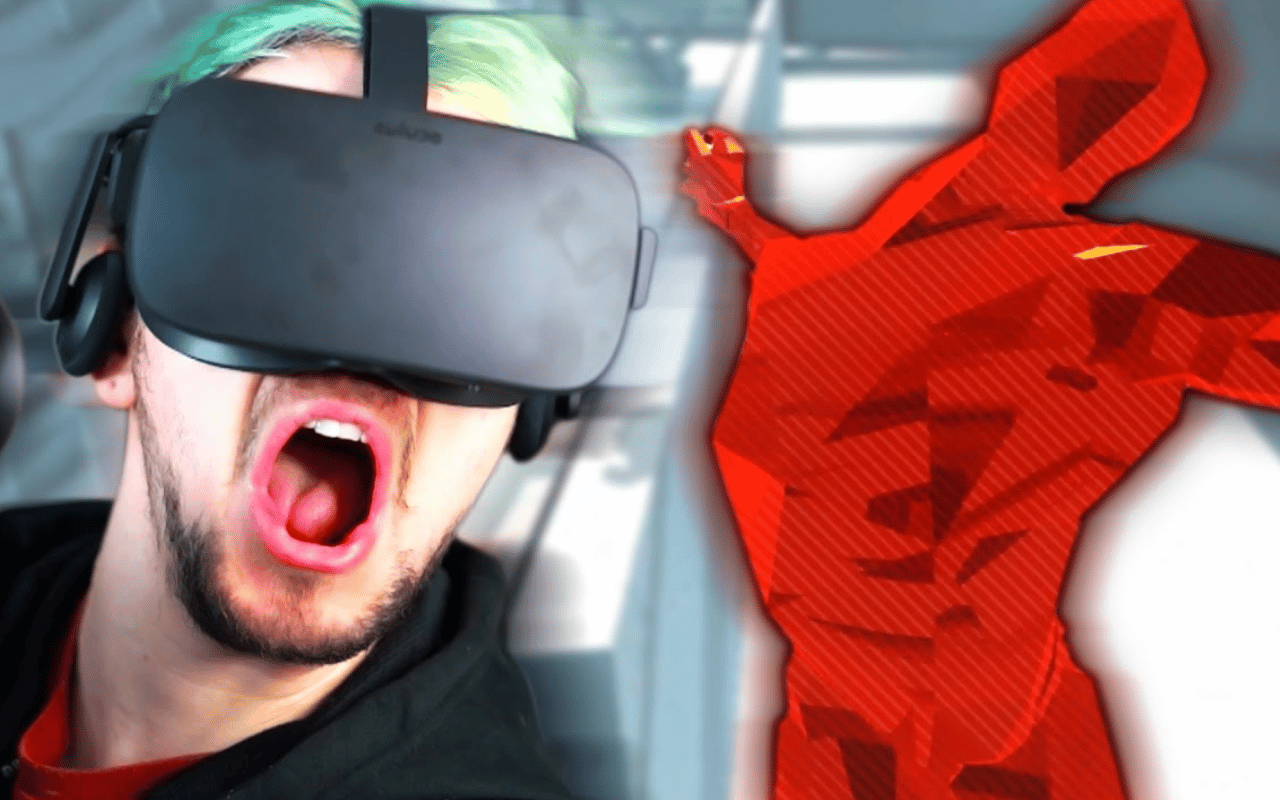
VR vs AR: Understanding the Differences
Virtual reality and augmented reality represent two emerging interactive technologies that digitally enhance our visual senses. But they have distinct approaches.
Virtual Reality Definition:
Fully artificial digital environments generated by computers are experienced through headsets that close off outside visual and audio stimuli.
Augmented Reality Definition:
Computer-generated perceptual overlays onto real environments are experienced through devices that maintain sight of physical surroundings.
Simply put, virtual reality replaces natural senses with a simulated world while augmented reality layers enhanced input onto tangible environments. When playing a VR game, putting on a headset shifts sight and sound to fully transport players to an elaborate virtual setting. Augmented reality systems like hologram projections or mobile apps merely augment specific visual details against familiar real backdrop sightlines.
Both chart exciting interactive futures either as total fantasy realms or contextual digital augmentation. As supporting technologies keep advancing, virtual environments get closer to physical while augmented ones become increasingly embedded into ordinary waking life.
Conclusion
In many ways, VR represents the future of gaming, destined to become more accessible and advanced as the underlying technologies continue maturing over generations to come. One day we may laugh at how comparatively primitive even the most cutting-edge modern VR hardware is now. For the moment, though, grab your headset and controllers to glimpse the beginnings of the bold virtual frontier that lies ahead.









